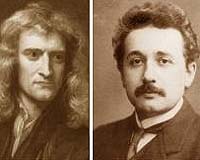 While we patiently wait for the publication of the Exact height of QHST to complete this week's physics lab, take a few moments to brush up on the simple trigonometry needed to calculate the height given the angle you measured and the distance to the base of the building.
While we patiently wait for the publication of the Exact height of QHST to complete this week's physics lab, take a few moments to brush up on the simple trigonometry needed to calculate the height given the angle you measured and the distance to the base of the building.Basically, as your reference table shows you, it boils down to this:

and please, make sure your calculator is giving you degrees and not radians






